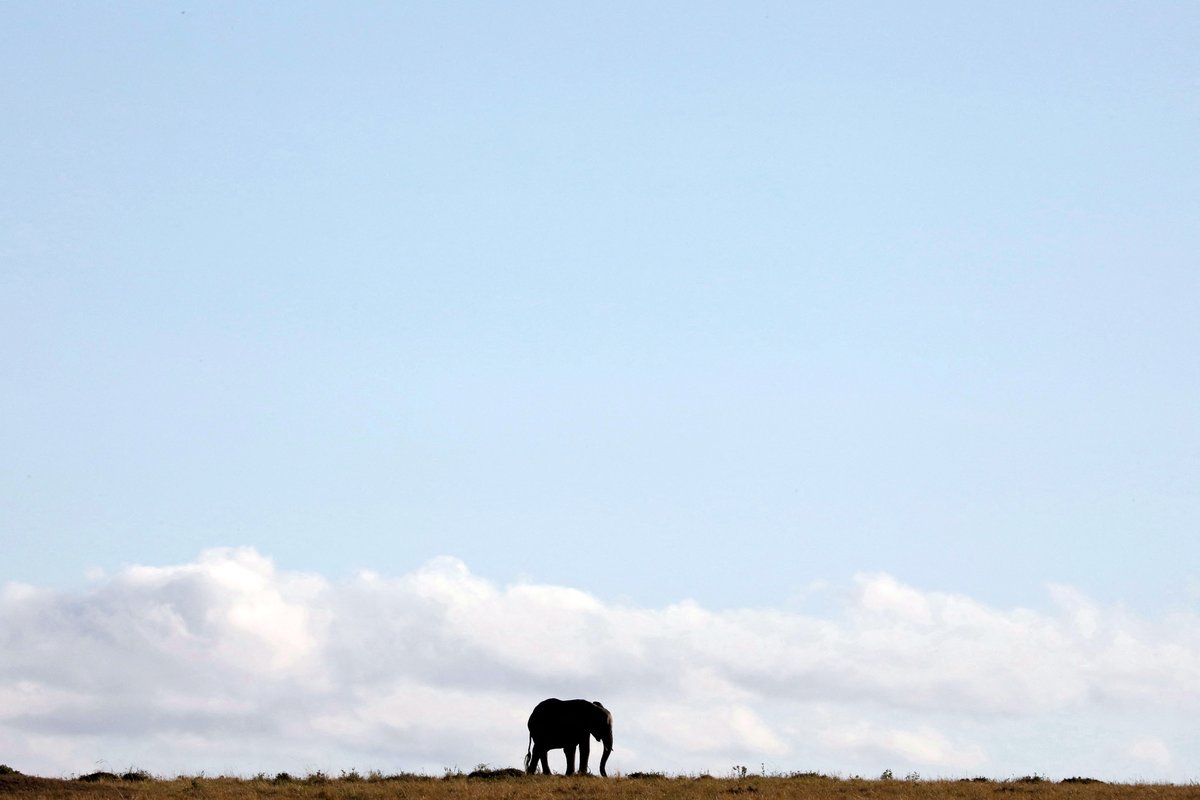
An elephant is seen in the Maasai Mara National Reserve, Kenya, in October 2019.
12:52 JST, November 22, 2024
African elephants are Earth’s largest land animals, remarkable mammals that are very intelligent and highly social. They are also in peril. Fresh evidence of this comes in a study that documents alarming population declines at numerous sites across the continent over about a half century.
Researchers unveiled on Nov. 11 what they called the most comprehensive assessment of the status of the two African elephant species — the savanna elephant and forest elephant — using data on population surveys conducted at 475 sites in 37 countries from 1964 through 2016.
The savanna elephant populations fell by about 70% on average at the surveyed sites and the forest elephant populations dropped by about 90% on average at the surveyed sites, with poaching and habitat loss the main drivers. All told, there was a 77% population decrease on average at the various surveyed sites, spanning both species.
Elephants vanished at some sites while their populations increased in other places thanks to conservation efforts.
“A lot of the lost populations won’t come back, and many low-density populations face continued pressures. We likely will lose more populations going forward,” said George Wittemyer, a Colorado State University professor of wildlife conservation and chair of the scientific board of the conservation group Save the Elephants, who helped lead the study published in the journal Proceedings of the National Academy of Sciences.
Poaching typically involves people killing elephants for their tusks, which are sold illegally on an international black market driven mostly by ivory demand in China and other parts of Asia. Agricultural expansion is the top factor in habitat loss.
The forest elephant population is estimated to be about a third that of savanna elephants. Poaching has affected forest elephants disproportionately and has ravaged populations of both species in northern and eastern Africa.
“We have lost a number of elephant populations across many countries, but the northern Sahel region of Africa — for example, in Mali, Chad and Nigeria — has been particularly hard hit. High pressure and limited protection have culminated in populations being extirpated,” Wittemyer said.
But in southern Africa, elephant populations rose at 42% of the surveyed sites.
“We have seen real success in a number of places across Africa, but particularly in southern Africa, with strong growth in populations in Botswana, Zimbabwe and Namibia. For populations showing positive trends, we have had active stewardship and management by the governments or outside groups that have taken on a management role,” Wittemyer said.
The study did not track a continent-wide population tally because the various surveys employed different methodologies over different time frames to estimate local elephant population density, making a unified head count impossible. Instead, it assessed population trends at each of the surveyed sites.
A population estimate by conservationists conducted separately from this study put the two species combined at between 415,000 and 540,000 elephants as of 2016, the last year of the study period. It remains the most recent comprehensive continent-wide estimate.
“The loss of large mammals is a significant ecological issue for Africa and the planet,” said conservation ecologist and study coauthor Dave Balfour, a research associate in the Centre for African Conservation Ecology at Nelson Mandela University in South Africa.
The world’s third extant elephant species, the slightly smaller Asian elephant, faces its own population crisis, with similar factors at play as in Africa.
Of African elephants, Wittemyer said, “While the trends are not good, it is important to recognize the successes we have had and continue to have. Learning how and where we can be successful in conserving elephants is as important as recognizing the severity of the decline they have experienced.”
Wittemyer added of these elephants: “Not only one of the most sentient and intelligent species we share the planet with, but also an incredibly important part of ecosystems in Africa that structures the balance between forest and grasslands, serves as a critical disperser of seeds and is a species on which a multitude of other species depend on for survival.”
"Science & Nature" POPULAR ARTICLE
-

Mass Oyster Die-Offs Confirmed in Japan’s Seto Inland Sea; High Water Temperature Cited as Primary Cause
-

Genome Study Reveals Milestone in History of Cat Domestication
-

Big Leap in Quest to Get to Bottom of Climate Ice Mystery
-

Security Camera Footage Vulnerable to Outside Access; Investigation Finds 3,000 Pieces Exposed Online
-

Star-eating Black Hole Unleashes Record-setting Energetic Flare
JN ACCESS RANKING
-

Japan’s Hopes for Seafood Exports Shot Down in China Spat
-

Keidanren Chairman Yoshinobu Tsutsui Visits Kashiwazaki-Kariwa Nuclear Power Plant; Inspects New Emergency Safety System
-

Japan to Charge Foreigners More for Residence Permits, Looking to Align with Western Countries
-

Japan Exports Rise in October as Slump in U.S. Sales Eases
-

Govt Aims to Expand NISA Program Lineup, Abolish Age Restriction


























